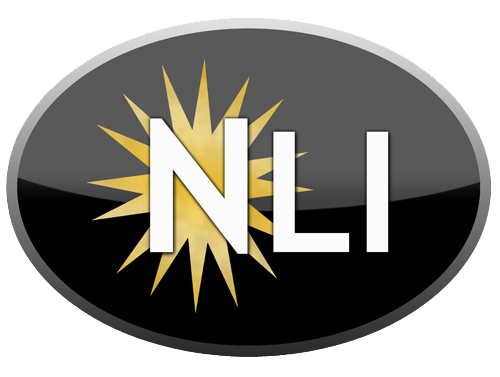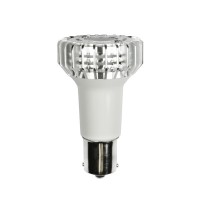Elevator Cabin LEDs
Discover the exceptional performance and convenience of our LED elevator lamps, specifically designed to enhance the illumination and ambiance within elevator cabins. These energy-efficient, long-lasting lamps provide a significant upgrade over traditional incandescent or fluorescent lighting solutions, delivering superior light quality and reducing maintenance requirements. Our LED elevator lamps are engineered to meet the unique demands of elevator cabin environments, where reliability, longevity, and quality illumination are essential. With dramatically reduced energy consumption and lifespans exceeding 50,000 hours, these LED lamps virtually eliminate the maintenance burden and expense associated with frequently changing bulbs in elevator cabins—a task that often requires specialized access, building permits, and service disruptions.
The maintenance advantages of LED elevator lamps cannot be overstated, as changing elevator cabin lighting is uniquely challenging and expensive. Unlike simply climbing a stepladder to change a household bulb, elevator lamp replacement typically requires specialized elevator service technicians, permits, building access coordination, and taking the elevator out of service—expenses that can easily reach $200-500+ per service call. Traditional incandescent elevator bulbs lasting 1,000-2,000 hours require replacement every 6-18 months in elevators with moderate daily use, generating ongoing costs and inconveniences. LED elevator lamps with 50,000+ hour lifespans extend maintenance intervals to 15-25+ years under typical use, essentially eliminating this recurring expense and disruption. For buildings with multiple elevators, the aggregate maintenance savings and avoided service disruptions quickly justify the LED upgrade investment.
Energy savings, while less dramatic than maintenance benefits due to the relatively low wattage involved, still contribute to operating cost reduction. Traditional elevator cabin lighting uses 40-60 watt incandescent bulbs or 20-30 watt compact fluorescent lamps, consuming energy continuously 24/7 since elevator lights typically remain on at all times. Replacing these with 8-15 watt LED equivalents saves 30-50 watts per elevator, which accumulates to 260-440 kWh annually per elevator. For a building with four elevators, that's over 1,000 kWh saved yearly worth $100-150 at typical commercial electricity rates. The savings compound over the LED's multi-decade lifespan while contributing to building energy efficiency goals and sustainability initiatives.
Color temperature selection affects the elevator cabin ambiance significantly. Most elevator applications use 3000K-4000K color temperatures that provide clean, professional lighting suitable for commercial and residential buildings. The 3000K warm white creates a comfortable, inviting atmosphere appropriate for hotels, residential buildings, and hospitality environments where passenger comfort is prioritized. The 3500K-4000K neutral to cool white provides crisper, more energizing illumination preferred in office buildings, hospitals, and commercial settings where the bright, clean appearance enhances the sense of professionalism and safety. Some specialty applications use 2700K for ultra-warm, residential-style ambiance, though this is less common in commercial elevator installations.
Common base types for elevator cabin LEDs include medium E26/E27 screw bases (standard household size), intermediate E17 bases, and candelabra E12 bases, depending on the fixture design. Some older elevator fixtures use specialty bulbs with bayonet bases (B15, B22) or bipin configurations. It's essential to verify your elevator cabin fixture's base type and bulb specifications before ordering replacements, as elevators vary widely in their lighting configurations. Many elevator cab ceilings use multiple small bulbs (often 4-8 bulbs) in recessed or flush-mount fixtures, while others use a single larger bulb or fluorescent lamps behind diffusers. Taking note of the existing bulb type, base, dimensions, and wattage ensures compatibility with LED replacements.
Vibration and electrical stability are important considerations for elevator cabin lighting. Elevators subject light bulbs to repeated vibration cycles during operation—acceleration, deceleration, and the mechanical vibrations of the elevator car moving through the hoistway. Traditional incandescent bulbs with delicate filaments can experience premature failure from these vibrations. LED elevator lamps with solid-state construction have no fragile filaments or components, making them inherently resistant to vibration and shock. The stable LED light output is also unaffected by the voltage fluctuations sometimes present in elevator electrical systems, delivering consistent illumination without flickering or instability that can occur with some fluorescent lamps.
Light quality in elevator cabins influences passenger comfort and perception of safety. Quality LED elevator lamps deliver smooth, flicker-free illumination with high CRI (Color Rendering Index) ratings that render skin tones and colors naturally. This is particularly important in elevator cabins where passengers spend time in close proximity under continuous direct lighting. Poor lighting quality—flickering, buzzing, or harsh color rendering—creates discomfort and a negative building impression. Modern LED technology provides instant full-brightness operation without the warm-up delay of compact fluorescent lamps, ensuring proper illumination immediately when elevator doors open.
Installation is straightforward once elevator access is secured—the LED lamps install exactly like traditional bulbs by simply screwing into or inserting into existing sockets. No rewiring or fixture modifications are required for screw-base and pin-base LED lamp replacements. The key challenges are elevator access requirements rather than lamp installation itself. When upgrading elevator cabin lighting to LED, many buildings choose to replace all lamps in all elevators simultaneously to maximize the value of the service call and ensure consistent lighting throughout the building, rather than upgrading individually as old bulbs fail.
Common Applications: Elevator cabin lighting (commercial buildings, residential towers, hotels, hospitals, parking garages), elevator car illumination, lobby elevator areas, anywhere elevator-specific lighting is required with difficult access and high maintenance costs
Key Advantages: 50,000+ hour lifespan eliminates frequent maintenance, greatly reduced energy consumption, superior vibration resistance, instant-on operation, consistent illumination unaffected by vibration or voltage fluctuations, high CRI for natural color rendering, cool operation for enclosed cabin fixtures
Common Base Types: E26/E27 (medium screw), E17 (intermediate), E12 (candelabra), some specialty bayonet and bipin configurations. Verify your fixture requirements before ordering.
LED-GBF-4K 4000K Cool White Elevator LED
Voltage: 12V, Wattage: 3W, Type: GBF LED, Color Temp: 4000K (cool white), Lumens: 390, Replaces..
$18.95
LED-1383-3W Warm White Elevator LED
Voltage: 13V, Wattage: 3W, Type: 1383 LED, Color Temp: 3000K (warm white), Lumens: 390, Replaces..
$18.95
LED-GBF-WHITE Warm-White Elevator LED
Voltage: 12V, Wattage: 3W, Type: GBF LED, Color Temp: 3000K (warm white), Lumens: 390, Replaces..
$16.95


